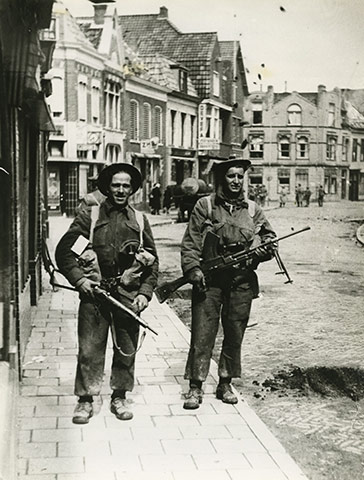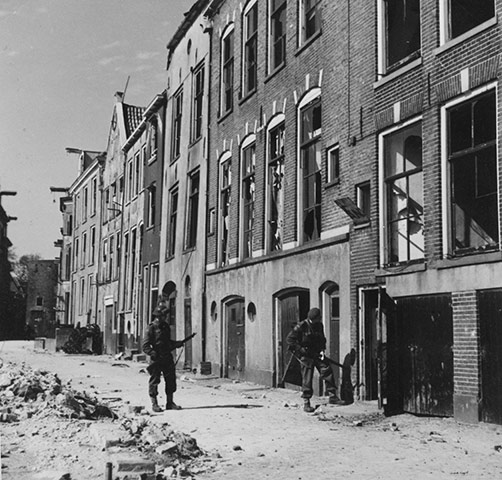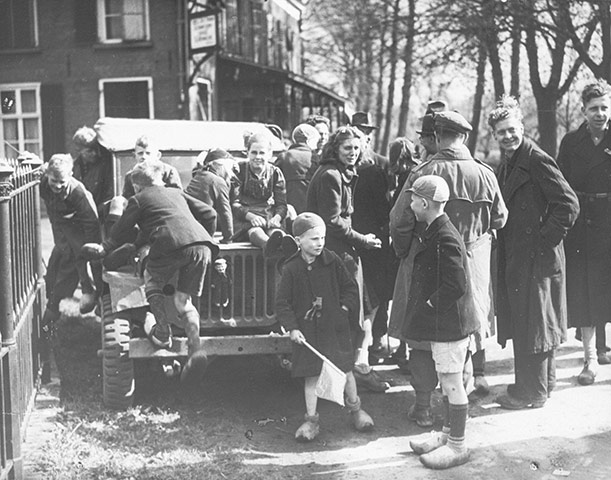- Point of Interest
- Dorpsstraat 57, 6731 AT Otterlo, Pays-Bas
In March 1945 the Allies broke the German defences and crossed the Rhine. The strange situation now occurred that the Northern part of the Netherlands was liberated from the east, from German territory. At some points the German forces put up stiff resistance, while elsewhere they chose to surrender.
While most of the Southern part of the Netherlands was liberated in September 1944, the Northern part of the country would remain in German hands until May 1945.
The Allied forces made it their highest priority to cross the Rhine and move into Germany. All attention was focused on the last German line of defence; the so-called Siegfried Line or Westwall, running parallel to the Rhine.
In March 1945 the Allies had breached the German defences and crossed the Rhine. The Allied forces were split into three groups. Two of these groups headed deeper into Germany while the third swung round and liberated the Netherlands from the east. The strange situation now occurred that the Northern part of the country was liberated from German territory.
Although the German army was in dire straits at this point, the Allied commanders still foresaw a lot of problems. The terrain in the Netherlands with its many streams, canals and waterways greatly favoured the defending forces.
The task of clearing the Northern part of the Netherlands was given to the 1st Canadian Corps. They were assisted by units from the British 30th Corps and the Polish 1st Armoured Division. The fighting at this stage of the war was erratic. At some points the German forces put up stiff resistance while at other points they chose to surrender. The main thought in the heads of the Allied soldiers was not to get killed in these final weeks of the war.




